Nokia Reader follows the usual layout of most RSS feed reader applications. When you open the application, you are presented with a list of current items from your RSS feeds. Each item can be expanded to show the description element of the item and a 'Read more' link, which opens the target URL in the Web application.
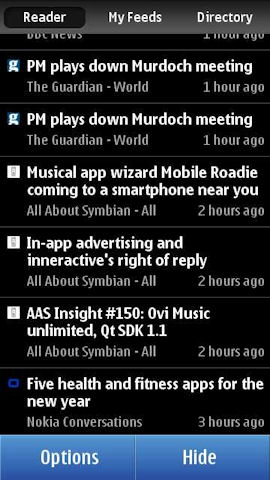
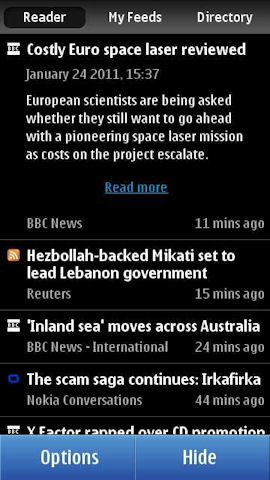
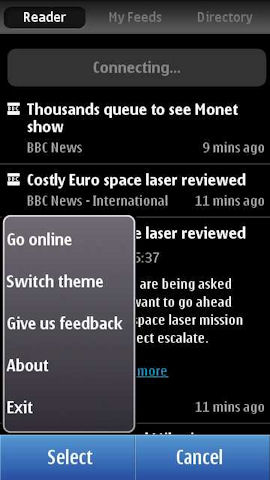
Feed subscriptions are controlled through the 'My Feeds' section of the application. You can subscribe to RSS feeds manually by entering a URL (supports RSS feed auto-discovery), or by choosing one of the pre-selected feeds from the Directory section of the application.
The application provides a homescreen widget, which, when added to the homescreen, will rotate through current stories and, in the top right hand corner, shows the number of new items since you last looked at the application.
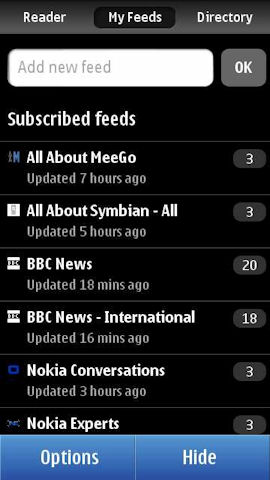
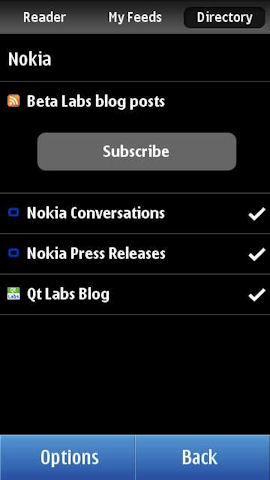
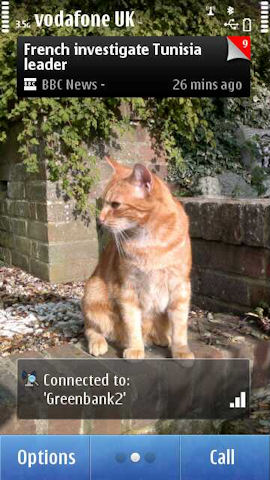
Behind the scenes Nokia Reader is powered by some clever technology. Traditionally RSS feed readers use periodic pull technique to retrieve new items (i.e. RSS feeds are repeatedly downloaded and checked for new items), something which can be both data and power intensive. By contrast, Reader uses Nokia's new push notification API in combination with a PubSubHubbub implementation on the server side. This means the application is not only automatically notified of new items more quickly, but also only makes a full network connection when necessary. The end result is that new RSS feed items are delivered in both a more timely and battery friendly manner.
Even with push technology, as an always on service, Nokia Reader will still have an impact on data usage and battery life. The amount of data (and battery power) will largely be dictated by the number of feeds you subscribe to and the frequency of new items in those feeds. As such, the application is best used for keeping updated with your most important feeds (e.g. your top 5). The application does have an offline feature, which turns notifications and data usage off, and which should be used during long periods of inactivity (e.g. overnight).
It's also interesting to note that Nokia Reader has been implemented in Qt and is a good example of the sort of performance we can expect to see from the new generation of Qt-powered applications.
Nokia Reader is compatible with all S60 5th Edition devices and Symbian^3 devices, with the exception of the Nokia 5800 and variants. As an experimental prototype, it is expected that there will be occasional problems with the application. As ever, Nokia Beta Labs is asking for feedback to be provided via their website.
More information on Nokia Reader 1.0 is available from Nokia Beta Labs.
Video introduction
This Nokia Beta Labs video introduces the Nokia Reader 1.0 beta.
